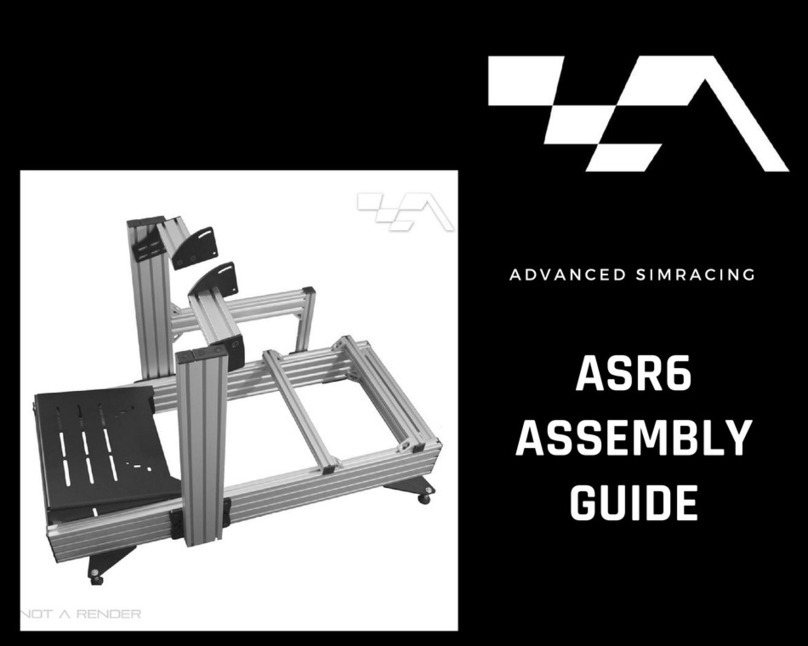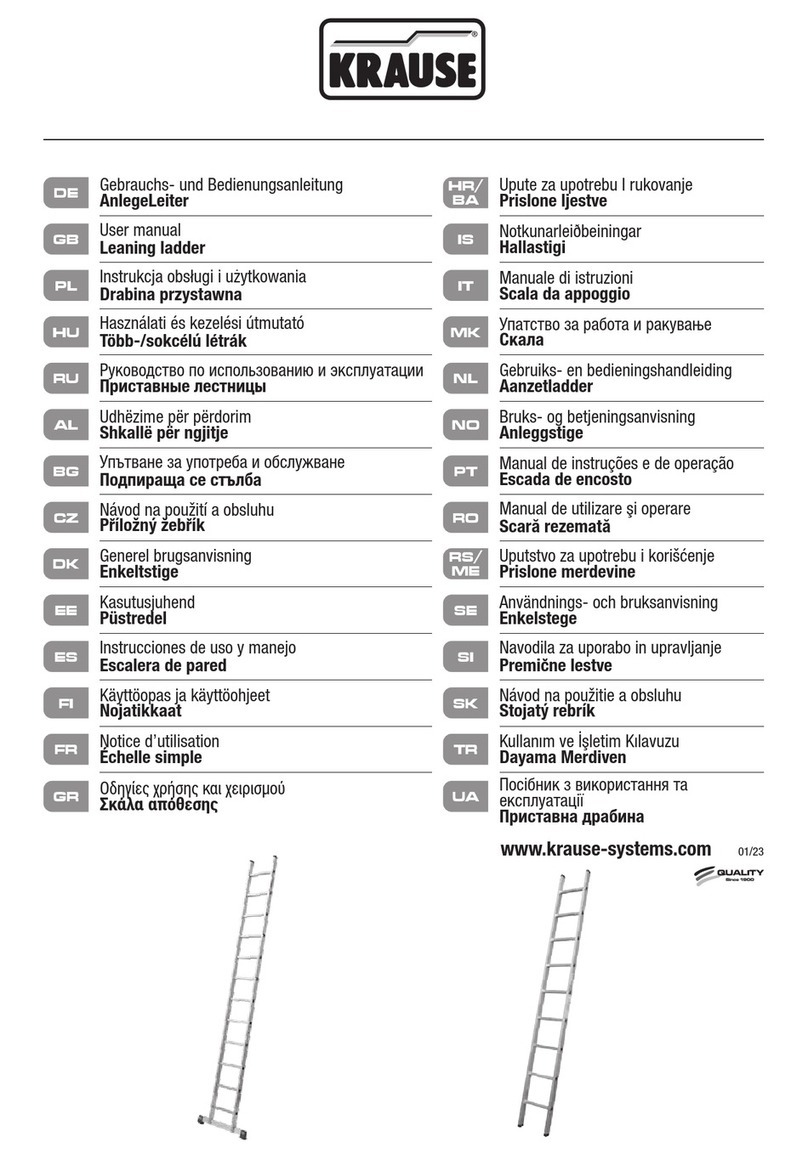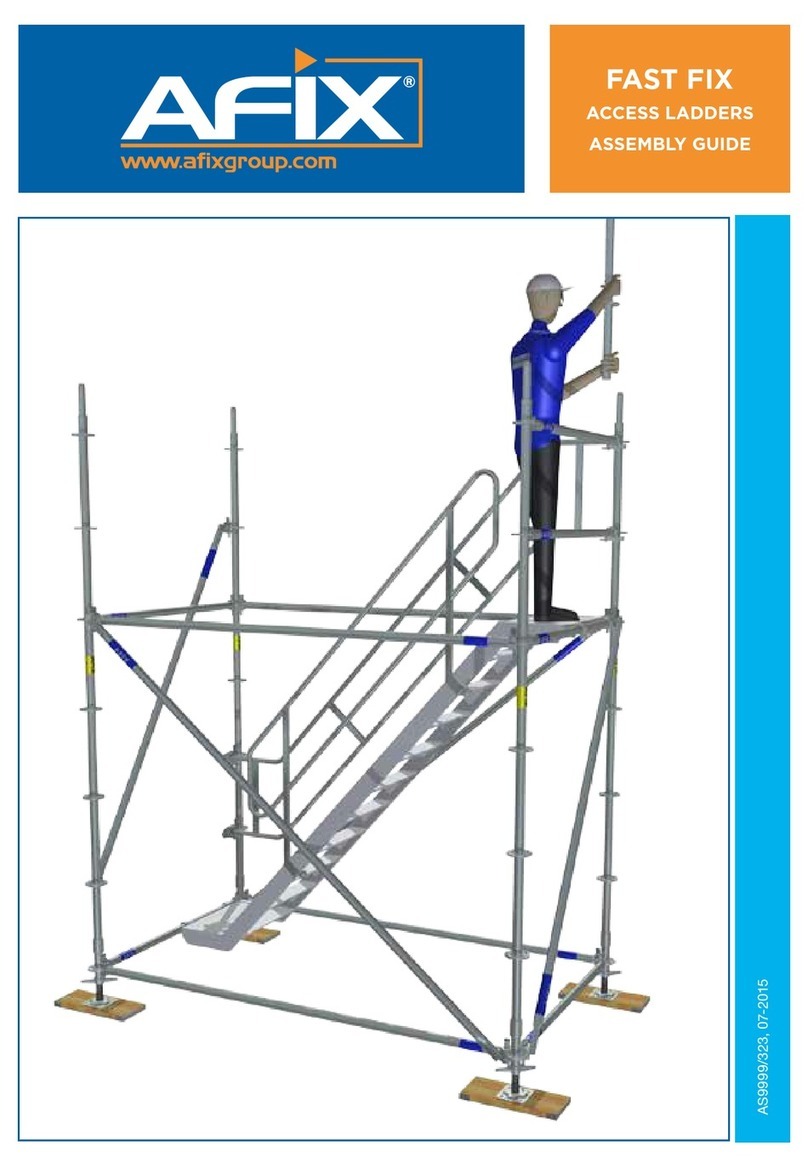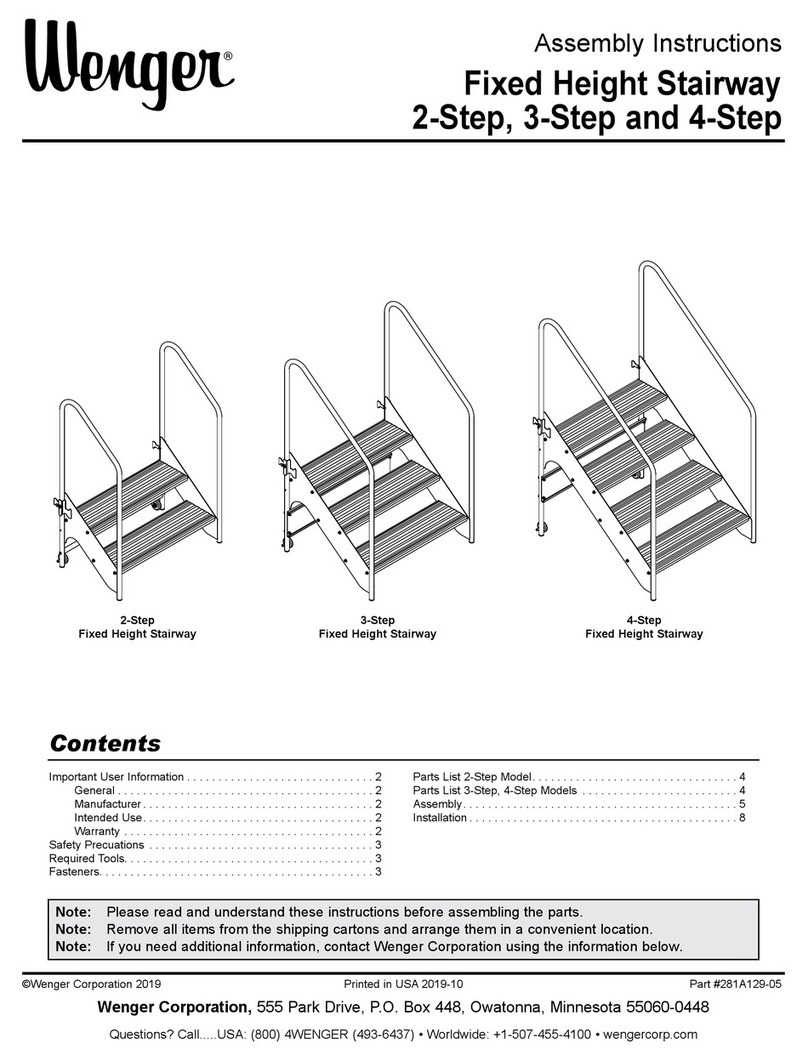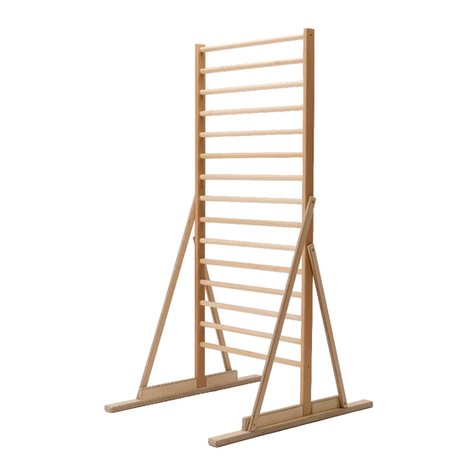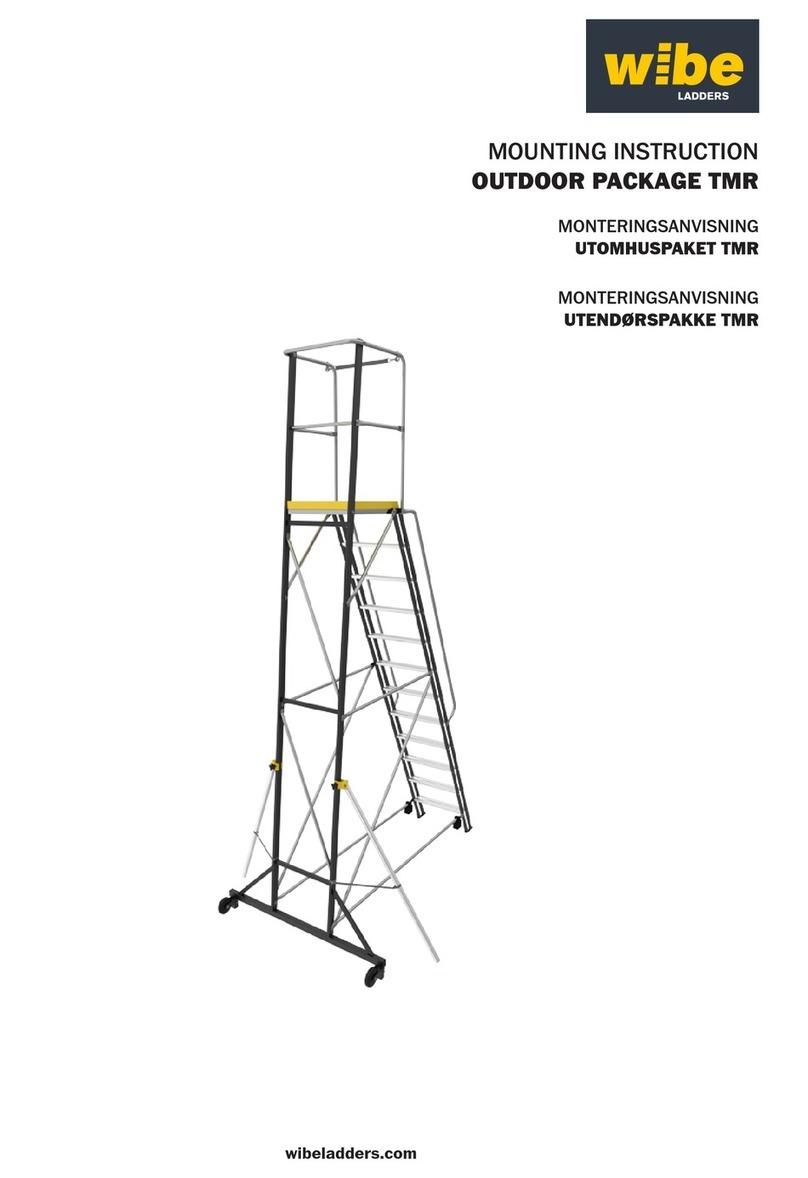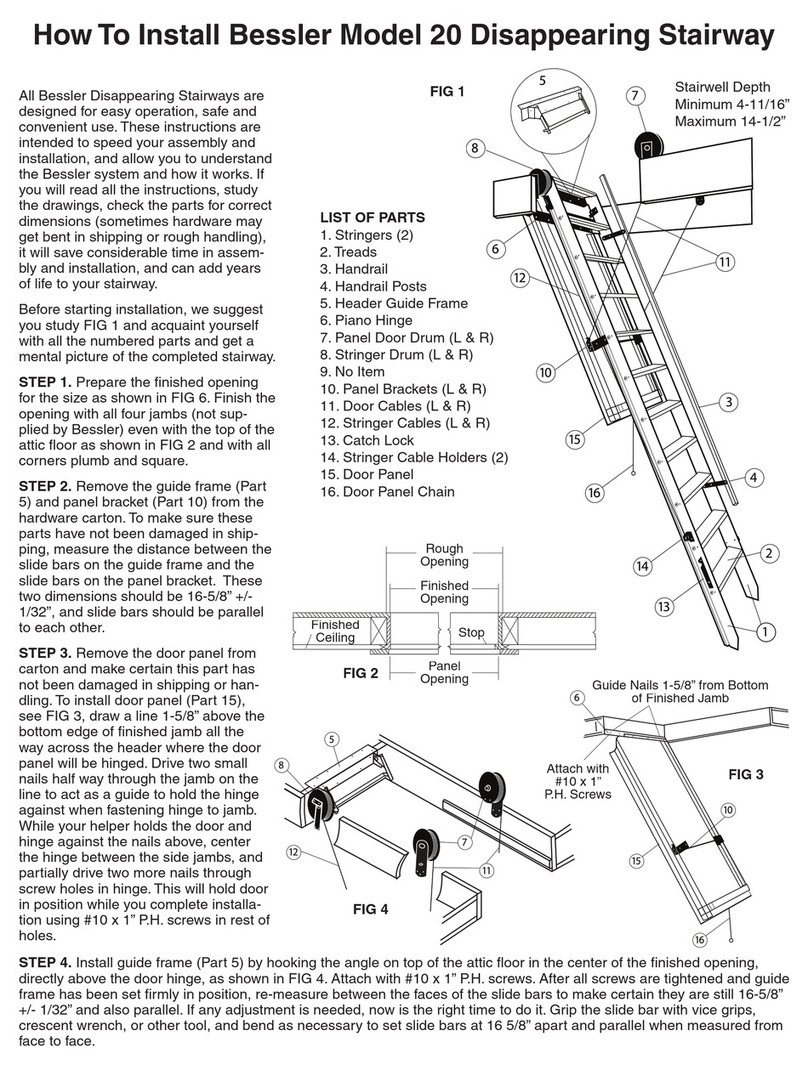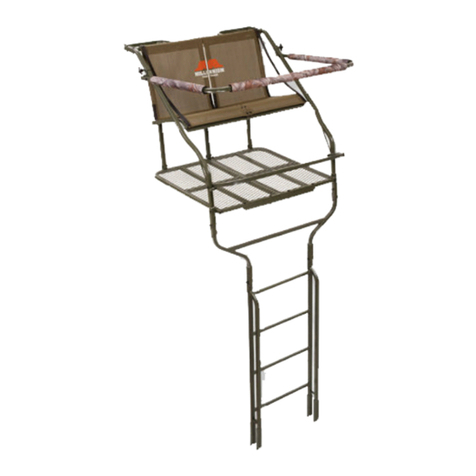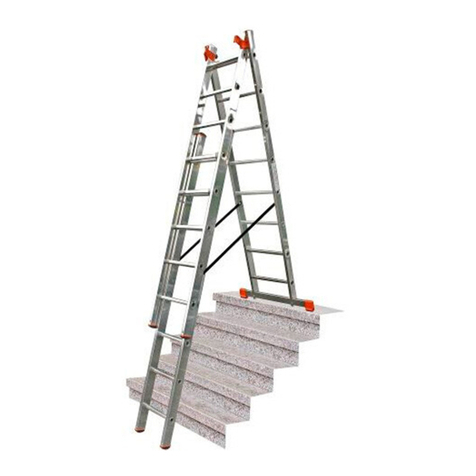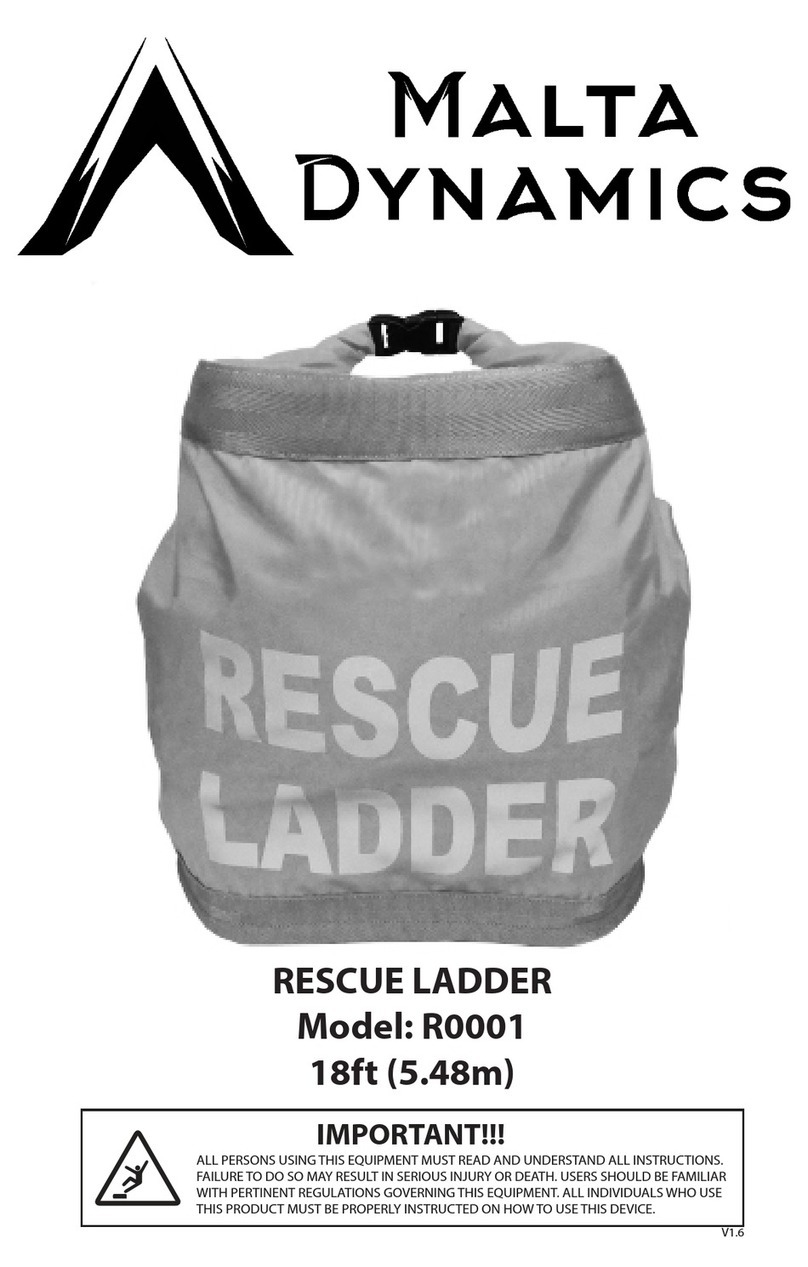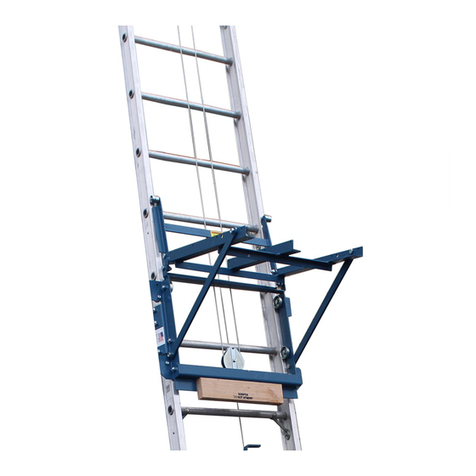
User Instructions must always be available to the user and are not to be removed except by the user of this equipment. For proper
use, see supervisor, User Instructions, or contact the manufacturer.
Compliant fall protection and emergency rescue systems help prevent serious injury during fall arrest. Users and purchasers of
this equipment must read and understand the User Instructions provided for correct use and care of this product. All users of this
equipment must understand the instructions, operation, limitations and consequences of improper use of this equipment and
be properly trained prior to use per OSHA 29 CFR 1910.66 and 1926.503 or applicable local standards. Misuse or failure to follow
warnings and instructions may result in serious personal injury or death.
PURPOSE
The KT36164 is a rescue system designed to return fall victims to safety. Deploy ladder kit using the existing anchor or new anchor
location. The ladder kit allows a capable fall victim to climb to safety while the rescuer pulls rope slack through the included rope
grab eliminating the chance of a high impact secondary fall. Any reference to“rescue system”in this manual include, and apply to,
the KT36164.
USE INSTRUCTIONS
1. A user must be qualied to properly and safely use this equipment in normal and emergency situations. Users
must have a physician ensure they are clear of any medical conditions that may aect the proper and safe use of
this equipment.
2. Before using a rescue system, user must be trained in accordance with the requirements of OSHA 29
CFR 1910.66 in the safe use of the system and its components.
3. Use only with ANSI/OSHA compliant personal fall arrest or restraint systems. The anchorage must have the
strength capable of supporting a static load, applied in the directions permitted by the system, of at least 5,000-lbf
(22kN) in the absence of certication.
4. The user shall be equipped with a means of limiting forces exerted on this product to static loads at or below
310 lbs. (141 kg)
5. Use of this product must be approved by an engineer or other qualied person to be compatible with any and
all structural & operational characteristics of the selected installation location and system to be connected to this
Rescue system. Improper use may result in serious personal injury or death.
6. The rescue ladder system must be inspected prior to each use for wear, damage, and other deterioration. If
defective components are found, the system must be immediately removed from service in
accordance with the requirements of OSHA 29 CFR 1910.66 and 1926.502.
7. The rescue system should be positioned in such a way that minimizes the potential for falls and the
potential fall distance during use. The complete fall protection system must be planned (including all components,
calculating fall clearance, and swing fall) before using.
8. A rescue plan, and the means at hand to implement it, must be in place that provides the prompt rescue of users
in the event of a fall, or assures that users are able to rescue themselves.
USE LIMITATIONS: The Rescue Ladder system shall not be used outside its limitations, or for any purpose
other than which it is intended.
1. The rescue system is designed for single user, with a capacity up to 310 lbs. (141 kg) including
clothing, tools, etc.
2. The rescue system is designed to be used in temperatures ranging from -40ºF to +130ºF (-40°C to +54°C).
3. Do not use the rescue system for fall protection purposes. Only static loading is permitted.
4. Do not expose the rescue system to chemicals or harsh solutions which may have a harmful eect.
5. Do not alter or modify this product in any way.
6. Caution must be taken when using any component of a fall protection, work positioning, rope access, or rescue
system near moving machinery, electrical hazards, sharp edges, or abrasive surfaces, as contact may cause
equipment failure, personal injury, or death.
7. Do not use/install equipment without proper training by a“competent person” as defined by OSHA 29
CFR 1926.32(f).
8. Do not remove the labeling from this product.
9. Once rescue ladder has been deployed it may not be re-used until properly re-packed by the manufacturer.
Rescue ladder must be shipped to the manufacturer or disposed of properly.
10. Additional requirements and limitations may apply depending on anchorage type and fastening option utilized
for installation. All placements must be approved by an engineer or other qualied person. Improper use may
result in serious personal injury or death.
COMPATIBILITY LIMITATIONS
The rescue ladder system must only be coupled to compatible connectors. OSHA 29 CFR 1926.502 prohibits snaphooks from being
engaged to certain objects unless two requirements are met: it must be a locking type snaphook, and it must be “designed for”
making such a connection. “Designed for” means that the manufacturer of the snaphook specically designed the snaphook to be
used to connect to the equipment listed. The following connections must be avoided, because they can result in rollout* when a
non-locking snaphook is used:
• Direct connection of a snaphook to horizontal lifeline.
• Two (or more) snaphooks connected to one D-ring.
• Two snaphooks connected to each other.
• A snaphook connected back on its integral lanyard.
• A snaphook connected to a webbing loop or webbing lanyard.
• Improper dimensions of the D-ring, rebar, or other connection point in relation to the snaphook dimensions that
would allow the snaphook keeper to be depressed by a turning motion of the snaphook.
*Rollout: A process by which a snaphook or carabiner unintentionally disengages from another connector or
object to which it is coupled. (ANSI Z359.0-2007)
Read This Instruction Manual Carefully Before Using This Equipment.

